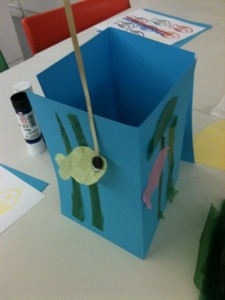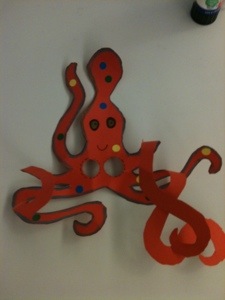My 6 year old son and I visited the Pitt Rivers Museum in Oxford this afternoon. This world famous museum (voted no 11 in the The Times Top 50 Museums of the World list) houses the University of Oxford’s ethnographic and archaeological material from around the world. It was founded in 1884 when General Pitt Rivers gave his collection of 18 000 objects to the University. The Museum now has over half a million objects!
We entered the Museum via the Natural History Museum and walked past lots of intriguingly shrouded skeletons covered whilst the Museum is closed undergoing refurbishment. We peeked at bits of dinosaur, admired the beautiful stone columns and carvings, each one made of a different type of rock and walked around to the entrance of the Pitt Rivers Museum.
We walked though the door into a darkened, almost magical setting; lots and lots of dark wood and glass cases filled with unusual and intriguing objects from all over the world. We picked up the ‘World Famous Museum Mouse Trail’ and were loaned a magnifying glass by a helpful Visitor Assistant and began our exploration.
My son loves exploring, so we followed the trail and wandered around the Museum. We quickly spotted a sign for family activities in the Lower Gallery and found our way to the Clore Learning Balcony (I just love that there’s a Learning Balcony!) to see what was on offer. A lovely volunteer welcomed us and explained that we could make a Japanese fan. My son decided it was a bit ‘girly’ for him (his words, cue eye roll from mother!), so we continued with our mouse trail.
The following images are his favourite objects in the Museum, funnily enough most are linked to natural history, my bug boy’s first love.
Time slipped by and soon we heard the bong of the closing bell and a disembodied voice telling us that the Museum would be closing in 10 mins. We quickly found the last mice and ran down the stairs to collect our Mouse Collector sticker, and visit the shop. No museum trip is complete without a trip to the shop! Sadly we never saw the witch trapped in a bottle, or the shrunken heads for which the Museum is famous (to some!), but that leaves something for next time! On our way back to Oxford station, my son announced he’d had the best.day.ever! What a result! Thank you Pitt Rivers Museum for such a brilliant family adventure.




























